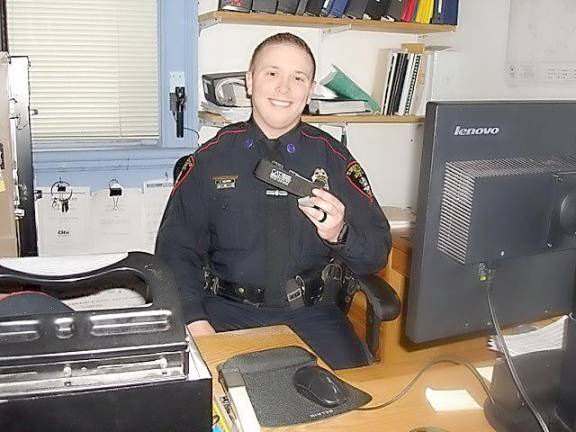Patrolman Robert Kozlowski's quick response and tourniquet expertise saves a woman's life
Goshen. Personnel at a dialysis center did not have the right equipment for the wound that threatened a patient's life. The tourniquet had to remain on her arm for three hours before surgeons were able to repair her artery.

It was quick work on the part of Patrolman Robert Kozlowski that saved the life of a Goshen woman.
On Friday, Dec. 13, a caller from a doctor’s office said she was seeking help for a woman who was feeling faint at their dialysis center. Upon arriving at the scene, Kozlowski and fellow officers Jacob Manna and Justin Velez found the patient going in and out of consciousness because of heavy bleeding in her arm.
“When we arrived she was responsive but lethargic in mannerisms, and we could see pooling of blood on the floor and on her chair, caused by a nick to the brachial artery," Kozlowski said. "Personnel at the center tried to control the bleeding, but lacking the right equipment for this type of wound, she continued to bleed."
Kozlowski knew how to apply a department-issued tourniquet to control the heavy flow until an ambulance arrived. Soon afterward, Mobile Life appeared on the scene to transport the patient to Orange Regional Medical Center.
To fully stop the bleeding, the tourniquet had to remain on her arm for three hours until there was no blood flow to the injury. After that, surgeons were able to repair her artery.
The best news is that the woman survived her ordeal, made a full recovery, and didn’t lose her arm, all thanks to Kozlowski's quick thinking and rapid response.
“I’m happy we’ve been trained to use this type of tourniquet," he said. "In the last few years, all of the officers in the department received training on how to use them, and we now carry them on our belts. These save lives, and we now know to be more mindful when going on certain calls."
Police are usually first on the scene
Kozlowski has been with the Village of Goshen Police Department for six years and has been a certified New York State EMT since 2015. He’s one of four certified EMTs on the force.
“Medical issues, like how the body works and how to treat certain situations have always intrigued me, so when the opportunity to earn certification came along, I jumped at the chance,” he said.
He explained that police officers are usually the first ones on the scene and are able to assist and assess the situation, and call an ambulance. This makes having a tourniquet on hand and knowing how to use it a lifesaver.
He noted that the EMTs are kept busy in the community, addressing situations in nursing homes, schools, and 55-and-over housing complexes, along with the general population.
“Active shootings and stabbings across the country prompted putting the tourniquet, a CAT Application Tourniquet, on our belts — one of the best things we’ve done," Kozlowski said. "We’ve always had tourniquets in our medical bags, but now they’re quickly accessible on our person."
The officer lives with his wife, Breanna, and their son Kyle, 16 months old, in the Village of Florida.
“Active shootings and stabbings across the country prompted putting the tourniquet, a CAT Application Tourniquet, on our belts — one of the best things we’ve done. We’ve always had tourniquets in our medical bags, but now they’re quickly accessible on our person." --Patrolman Robert Kozlowski